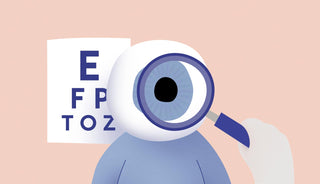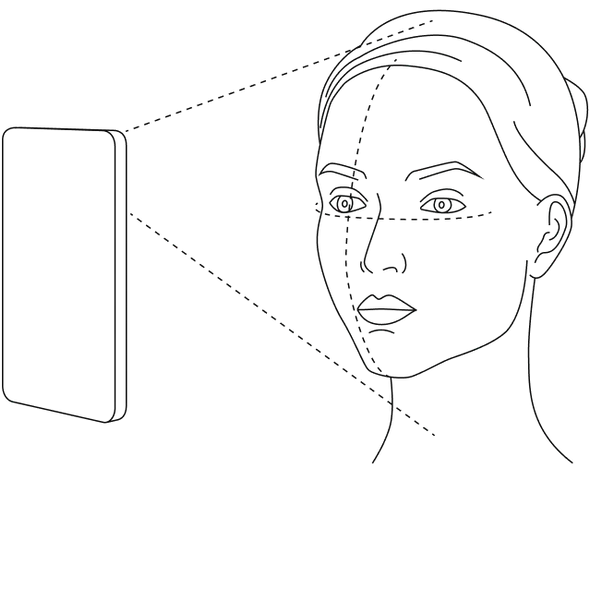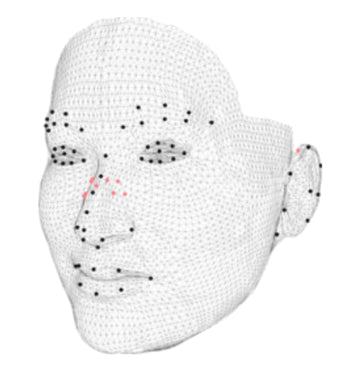Tingling, itching, burning... The symptoms of dry eyes can vary. But the consensus is clear on its effect: it's unpleasant! Aqueous-deficiency dry eye can happen to anyone, and finding the exact cause isn't always easy.
Fortunately, there are ways to alleviate it. Beyond simply dragging a bottle of eye drops everywhere you go or rubbing them frantically, we have a few other tips to share with you. Let's take a closer look at the symptoms, causes and treatments of dry eyes, to make your daily life a little more comfortable.
What you will learn in this article
- What is dry eye?
- What are the symptoms of dry eyes?
- What causes dry eyes?
- 7 tips to prevent dry eyes
- Solutions and treatments for dry eyes
What is dry eye?
Dry eye, also known as dry eye syndrome, is characterized by an insufficient quantity of tears produced by the eyes. Tears are produced by the lacrimal glands and spread over the surface of the eye by blinking. Sometimes, however, the eyes don't produce enough tears to keep them moist, causing dry eyes. This phenomenon is caused by three common situations:
1. The quantity of normal tears produced is not sufficient
Your body simply doesn't produce enough normal tears to keep your eyes lubricated. That is, the lacrimal glands are not supplying enough to maintain a healthy eye surface.
2. The tears produced evaporate from your eyes too quickly
External factors can also cause your tears to evaporate too quickly. Several elements of the environment in which you live can cause this.
3. The composition of your tears is unbalanced
Tears are made up of a mixture of water, salt, fats and proteins. If the balance of this combination is unbalanced, for example, if the water content is too low, your eyes may lack moisture.
What are the symptoms of dry eyes?
- Dry eyes can cause a number of symptoms. Here are the main ones, to help you identify if you have the condition.
- Red or irritated eyes
- Blurred vision
- Sensation of a foreign body in the eye
- Itchy eyes
- Difficulty keeping eyes open
- Difficulty wearing contact lenses
What causes dry eyes?
Anyone can be affected by dry eyes, but predispositions can contribute more. You may be more likely to suffer from dry eyes if you have any of the following conditions:
- Aging
- Prolonged contact lens wear
- Weather conditions
- Certain medications (e.g. antidepressants, blood pressure medication, antihistamines, etc.)
- Environment (dust, wind, air conditioning, etc.)
- Eye surgery (cataract or refractive surgery)
- Screen time
- Medical conditions
7 tips to prevent dry eyes
Fortunately, there are ways to prevent dry eyes. Adopt these habits to avoid dehydrating your eyes as much as possible.
Stay properly hydrated
Like every other organ in the body, the eyes need water to function. Make sure you stay properly hydrated, drinking 1.5 to 2 liters of water a day.
Avoid dry, windy places
Since the external environment has a direct effect on the hydration of your eyes, avoiding dry and windy places can prevent early evaporation of your tears.
Wear sunglasses
Wear tinted glasses when you go outdoors. Dust and wind can contribute to dry eyes, so sunglasses offer useful protection.
Moisturize your eyes
You can also moisturize the ocular surface directly, using liquid products. You'll find effective products on drugstore shelves to keep your eyes moist!
Avoid spending too much time in front of a computer screen
Staring at a screen can cause your eyes to blink less frequently, leading to dryness of the ocular surface. Be sure to rest your eyes by looking into the distance frequently.
Use a humidifier
Dry air can irritate the ocular surface. Be sure to humidify your environment with a humidifier to maintain a suitable level of water vapour in the air and avoid drying out.
Regular eye examinations
Did you know that optometrists can analyze your dry eyes during your eye exam? They can quantify tears and assess their composition, then suggest appropriate treatments.
Solutions and treatments for dry eyes
Fortunately, there are solutions to relieve dry eyes. Discover the options and treatments available, which can help reduce the intensity of symptoms and ultimately improve your quality of life!
1. Artificial tear gels and ointments
Artificial tears are the most common treatment for dry eyes. They involve the use of ocular lubricants to help replace tear fluid and moisturize the eyes. Artificial tears can take the form of drops, which are very liquid, or gels and ointments, whose creamy texture prolongs the effect.
2. Meatus plugs
A meatus plug is a small plug-shaped device that can be inserted into the tear ducts (called "meatus") of the eye to keep them open and unclogged, in order to prevent dry eyes. These plugs help improve tear drainage and prevent dry eyes by allowing tear fluid to flow normally.
3. Specialized technologies and treatments
In some cases, these solutions are not enough to relieve dry eyes. That's why more advanced technologies and specialized treatments are available to combat this syndrome. Please note that these technologies are not used as a primary treatment! We don't offer them at New Look, but here they are for your information.
IPL
IPL (intense pulsed light) treatment aims to stimulate secretion from the Meibomian glands, liquefying the oil they contain and helping lubrication. This technology, which prevents early evaporation of the tear film, can be used to treat ocular rosacea and inflammation.
Lipflow
This completely painless technology uses a precise algorithm to unblock the glands responsible for producing the oily component of tears. This automated self-pulsation treatment drains the Meibomian glands, improving ocular lubrication.
iLux
This treatment involves the manual application of heat and pressure to release glandular obstruction in a specific area, using a device to help hydrate the ocular surface.
LLLT mask
This LLLT (Low Level Laser Therapy) mask treatment, or photobiomodulation, uses warm, low-intensity light to stimulate lubrication. The production and oily texture of secretions is improved, stabilizing the tear film. The technology can be used to treat styes, chalazions and meibomian dysfunction.
BLEPHEX
This is a hygiene treatment that uses micro-exfoliation to clean the eyelid margin. A device removes residues and bacteria from blepharitis, unclogging glands and promoting normal lubrication.
When should you consult an optometrist for dry eyes?
Although a multitude of treatments and solutions exist, it's always advisable to consult an optometrist if symptoms persist. Keep an eye out for uncomfortable symptoms such as red eyes, burning or stinging eyes, blurred vision or difficulty keeping your eyes open, to make sure you book an appointment and regain your quality of life!






